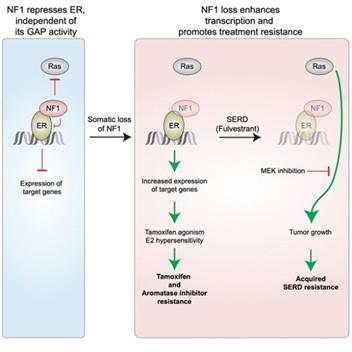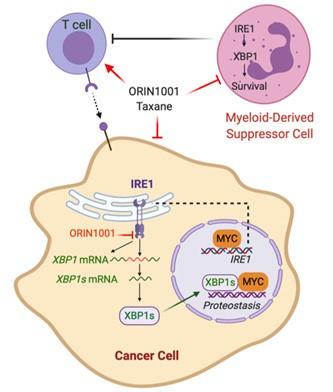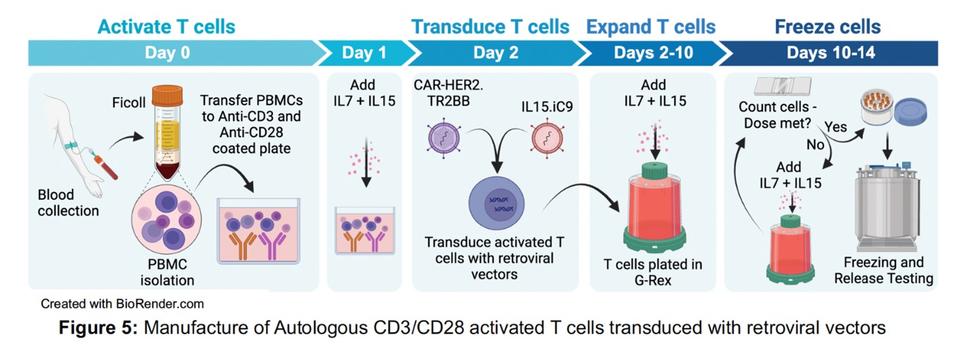Baylor College of Medicine
Principal Investigators
Xiang Zhang, Ph.D.
Interim Director, Lester and Sue Smith Breast Center
William T. Butler, M.D., Endowed Chair for Distinguished Faculty of Baylor College of Medicine
Professor, Molecular and Cellular Biology
Baylor College of Medicine
One Baylor Plaza
Houston, TX 77030
713-798-6239
Mothaffar F. Rimawi, M.D.
Dan L Duncan Professor
Executive Medical Director
Associate Director for Clinical Affairs
Dan L Duncan Comprehensive Cancer Center
Baylor College of Medicine
Overview
Lack of progress in curing metastatic breast cancer is due to a number of fundamental treatment barriers. These include insufficient knowledge of therapeutic vulnerabilities, lack of reliable predictive biomarkers, inability to target common tumor suppressor gene loss, inability to target oncogenes that are not protein kinases or ligand- dependent transcription factors, resistance due to clonal evolution and tumor heterogeneity, and failure to mount an immune response against the tumor. This Specialized Programs of Research Excellence (SPORE) renewal focuses on these obstacles by articulating cross-cutting objectives and aligned approaches that increase the efficiency of core utilization and promote inter-project collaboration. The three full Projects include studies on how to target the de-repressed kinases consequent upon loss of the PTPN12 or the NF1 tumor suppressors in breast cancer, as well as the development of a promising new therapeutic approach for MYC-positive breast cancer. During the execution of these Projects we will:
- deploy proteogenomic approaches for monitoring kinase targets and resistance pathways;
- establish high-quality biomarkers for clinical trial eligibility and stratification;
- investigate disease-monitoring approaches with circulating tumor cells (CTCs) and circulating tumor DNA (ctDNA);
- incorporate immunological approaches into treatment regimens by increasing the quality and quantity of tumor infiltrating lymphocytes;
- embed our SPORE biomarker program into early phase clinical trials to inform the design of Phase 3 trials; and
- promote collaborative research between Academia, NCI-Supported Cooperative Groups, Industry, and Advocacy Groups.
These objectives are served by three reformatted Cores. We are adding a dedicated and highly-qualified molecular research pathologist for the Pathology and Biobanking Core, deeper bioinformatics expertise to the Informatics and Biostatistics Core, and a new SPORE director. We are also providing additional advocates and advisory board members for the Administration Core. The Career Enhancement and Developmental Research Programs will be guided by highly experienced leadership and, as before, they will cement the future of our SPORE. With this powerful enhanced program, we will advocate nationally for progress in the treatment of advanced breast cancer, with the conviction that a cure is a near-term possibility.
Project 1: Co-Targeting ER and Kinome Deregulation in Breast Cancers with Neurofibromin Deficiency
Project Co-Leaders
- Eric Chang, Ph.D. (Basic Co-Leader)
- Bora Lim, Ph.D. (Clinical Co-Leader)
Over 250,000 cases of breast cancer are diagnosed annually in the US alone, and about 80% of these are estrogen receptor-positive (ER+). Despite great progress in treating ER+ breast cancer with endocrine therapy, treatment resistance remains a major problem, causing the majority of deaths overall. Our clinical studies on endocrine therapy resistance have found that inactivation of the neurofibromatosis type 1 (NF1) gene, which may occur in as many as 20% of primary ER+ breast cancer patients, correlates with poor outcome. NF1 encodes neurofibromin, best known as a Ras repressor (a GTPase Activating Protein, or GAP). The scientific premise of this project stems from our discovery that NF1 has GAP-independent activity by also acting as an ER transcriptional co-repressor. When the NF1-ER interaction is selectively inhibited (without affecting GAP activity), ER is de-repressed, estradiol (E2)-dependent gene expression is enhanced, and ER+ cells can grow in low E2 levels. This is observed in aromatase inhibitor-treated patients. It is stimulated by tamoxifen, not inhibited. In contrast, NF1-depleted cells still respond to fulvestrant, a selective ER degrader (SERD), even though the reduced repression of Ras-Raf signaling in NF1-depleted cells promotes acquired resistance. This resistance can be blocked by an FDA-approved MEK inhibitor (MEKi). This project will investigate the hypothesis that NF1-deficient ER+ breast tumors should be treated by a SERD combined with inhibitors that block the Ras-Raf pathway. The key scientific premise is published in a Cancer Cell paper (Zheng et al 2020) and its graphic abstract is presented below:
Project 3: Targeting Endoplasmic Reticulum Stress Sensor IRE1 to Enhance Chemotherapy Sensitivity in MYC-driven breast cancer
Project Co-Leaders
- Xi Chen, Ph.D. (Basic Co-Leader)
- Mothaffar F. Rimawi, M.D. (Clinical Co-Leader)
- Xiang Zhang, Ph.D. (Basic Co-Leader)
Limited sensitivity to chemotherapy, together with an immunosuppressive tumor microenvironment, drives breast cancer mortality in HER2-negative breast cancer. We have identified the IRE1/XBP1 branch of the Unfolded Protein Response (UPR) or endoplasmic reticulum (EnR) stress response as a previously unexplored therapeutic vulnerability in MYC-driven breast cancer. It enhances chemotherapy sensitivity and reverses the immunosuppressive tumor microenvironment. IRE1 is amplified in approximately 10% of human breast cancer, and frequently co-amplified with the MYC oncogene. Activation of MYC is synthetic lethal with IRE1/XBP1 pathway inhibition. We found that inhibition of the IRE1/XBP1 pathway with the highly selective IRE1 RNase inhibitor ORIN1001 suppresses tumor growth in MYC-high-expressing (MYChigh), but not MYC-low-expressing (MYClow), patient-derived xenograft (PDX) models. ORIN1001 substantially enhances the docetaxel efficacy, resulting in rapid tumor regression of the MYChigh PDX tumors. Furthermore, ORIN1001 plus docetaxel therapy triggers massive cytotoxic T-cell infiltration, depletion of immunosuppressive myeloid-derived suppressor cells (MDSCs), and substantial upregulation of PD-L1 in the tumor microenvironment. ORIN1001 has an excellent safety profile and is well-tolerated. These preclinical data prompt us to hypothesize that inhibition of the IRE1/XBP1 pathway with IRE1 inhibitor ORIN1001 compromises MYChigh breast cancers by inhibiting obligatory UPR stress adaptation that is required for cellular viability. This therapeutic effect of ORIN1001 is associated with a marked increase in taxane sensitivity. In addition, MDSCs are also selectively depleted by ORIN1001 in the presence of a taxane, thus reversing immunosuppression and potentially sensitizing MYChigh breast cancers to immune checkpoint intervention. A pre-clinical phase study in breast cancer models will be conducted in parallel with a phase 1 clinical trial. The overarching objective of this proposal is to design and open a phase 2 clinical trial in MYC-positive metastatic breast cancer. Eligibility and endpoints will be defined by the execution of the research aims.
Project 4: Advancing Toward TRAILBLASER: A Trial of TRAIL-R2/HER2 CART for Metastatic Breast Cancer
Project Co-Leaders:
- Hoyos Velez, Valentina, M.D. (Basic Co-Leader)
- Mothaffar F. Rimawi, M.D. (Clinical Co-Leader)
- Rachel Schiff, Ph.D. (Basic Co-Leader)
Challenges to the successful treatment of breast cancer (BC) using T cells expressing chimeric antigen receptors (CARTs) include: (1) the immunosuppressive tumor microenvironment (TME)1,2, (2) lack of CART persistence, and (3) possible toxicities. This project addresses components of each of these three problems. First, we target a fundamental component of the TME, namely myeloid derived suppressor cells (MDSCs), which profoundly inhibit the functionality and persistence of CARTs3,4. We developed a novel chimeric co-stimulatory receptor, T2B, which targets TNF-related apoptosis-inducing ligand receptor 2 (TR2), which is expressed on MDSCs and provides co-stimulation to CARTs via the 4-1BB endodomain. Co-expression of T2B in HER2-CARTs augmented their efficacy against orthotopic BC tumors by inducing MDSC apoptosis, improving the ability of CARTs to kill BC cells in vitro and control tumor growth in vivo. Further, HER2-CARTs expressing T2B expanded and persisted more effectively at tumor sites than HER2-CARTs alone in the presence of MDSCs5. To further boost the therapeutic utility of HER2-CARTs expressing T2B, we additionally incorporated IL15 expression to increase potency as well as an inducible caspase 9 safety switch to limit potential toxicity. Our overarching hypothesis is that co-expressing T2B, IL15, and iC9 in HER2 CART cells (H2.T2B.15 CART) will result in a safe and effective treatment for stage IV HER2-expressing BC. With our exciting pre-clinical results, we have designed a phase I single-center clinical trial: TRAILBLASER TRAIL-R2 and HER2 bi-specific CART cells for the treatment of metastatic breast cancer.
Administrative Core
Core Co-Directors
- Xiang Zhang, Ph.D. (Core Director)
- Eric Chang, Ph.D. (Co-Core Director)
- Bora Lim, M.D. (Clinical Science Leader)
The Administrative Core is charged with facilitating communication and sustaining integration among the SPORE members and projects, as well as providing efficient support services for all the SPORE components, in order to maximize synergy in achieving our translational research goals.
Informatics and Statistics Core
Core Co-Directors
The Informatics and Statistics Core (ISC) will provide three broad types of services:
- Comprehensive biostatistical consultation, experimental design, data analysis and reporting;
- Integrative proteome-genomic bioinformatic consultation, experimental design, data analysis and reporting;
- Development, customization, integration, and maintenance of databases and data management systems to support data management needs of SPORE projects and cores.
As a by-product, when necessary, the Core can also develop new methods or adapt existing methods from other arenas to meet the unique needs of the SPORE.
Pathology and Biobanking Core
Core Co-Directors
The Pathology and Biobanking Core will provide the following services to projects and integration with other cores in this proposal:
- A centralized resource to acquire, store, and utilize human biospecimens for cancer research;
- To coordinate and manage the pathology activities of this SPORE project, and ensure that Project Investigators have ready access to specialized pathology expertise and interpretation; and
- To design and validate biomarker-based tests (genomic and/or proteomic) that support all project stages, including clinically-validated and reported assays for SPORE-based clinical trials.
This Core seeks to improve the lives of breast cancer patients by facilitating novel translational biomarker discovery into the development and validation of clinical assays. This Core serves as a centralized repository for biospecimen acquisition and use, management of the histopathology activities of each SPORE project, and the development and validation of biomarker-based molecular testing that supports all stages of SPORE project development.
Developmental Research Program
Program Co-Directors
In order to enable SPORE investigators to rapidly develop new research opportunities which could translate into early benefits for breast cancer patients, and to allow for exploration of new techniques which may require substantial efforts but which are nevertheless not ready for full scale multi-year research funding, we have devoted considerable effort and resources to this SPORE Developmental Research Program.
Career Enhancement Program
Program Co-Directors
Awardees will participate in translational breast cancer research projects. There are one to two awardees at any one time, who may be either MD’s or PhD’s. Candidates are selected based on their previous accomplishments and their potential and desire to pursue a career in academic breast cancer research. While our primary focus is to support promising young investigators at the junior faculty level, it is possible that more established investigators may also be appropriate for support.




